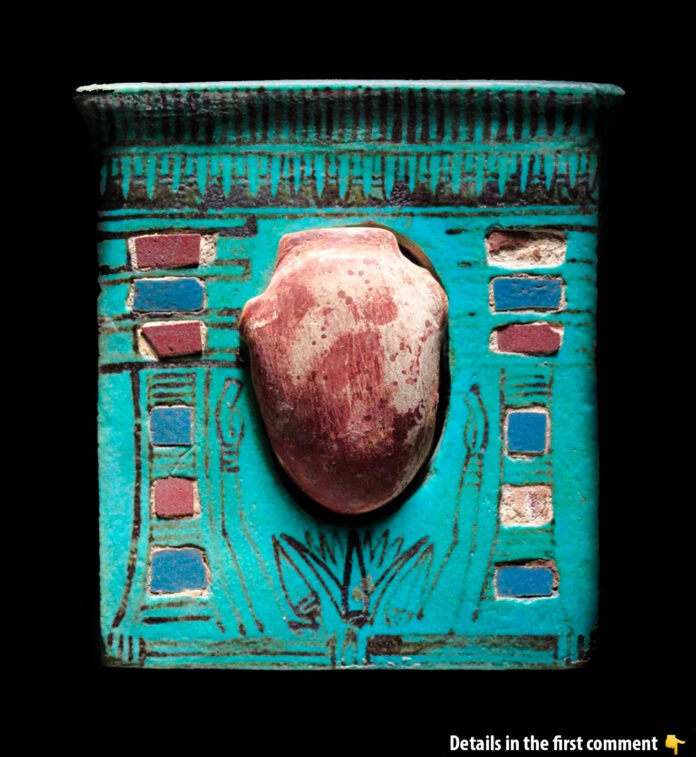The heart (ib) held unparalleled significance in the spiritual and cultural fabric of Ancient Egypt. More than a mere physical organ, it was revered as the seat of intelligence, emotion, memory, and moral integrity. It played a pivotal role in the journey to the afterlife, where judgment awaited every soul. To ensure a favorable verdict, Egyptians crafted heart-shaped amulets, which became powerful symbols of protection and divine justice. This article explores the profound meanings, rituals, and legacy of these ancient artifacts.
The Heart: The Core of Egyptian Belief
In Ancient Egyptian cosmology, the heart was much more than a bodily organ; it was seen as the repository of one’s moral essence. Egyptians believed the heart held memories, emotions, and one’s true character. It was the key witness in the afterlife, recounting the deeds—both virtuous and sinful—of the deceased. Because of this, the heart was one of the few organs left in the body during mummification or reinserted after preservation. Its significance extended to linguistic expressions, with the word for heart (ib) used in phrases to denote close relationships, such as describing a beloved friend as “one who has entered the heart.”
Heart Amulets: Craftsmanship and Purpose
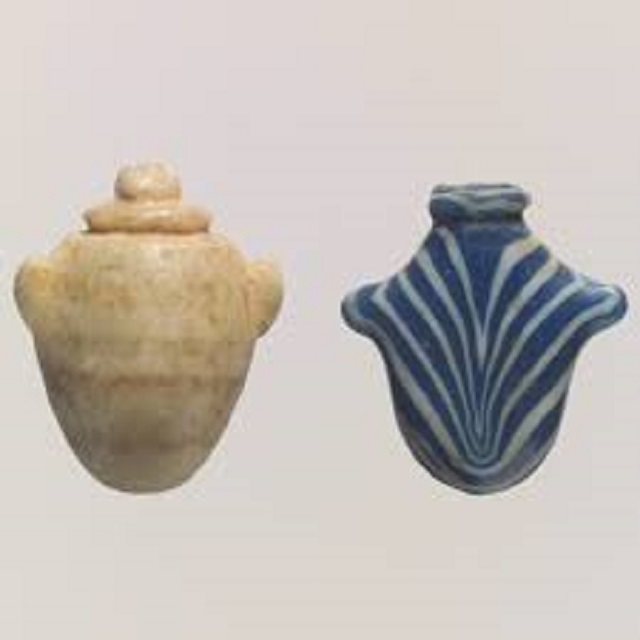
To protect this vital organ, Egyptians created heart-shaped amulets, often inscribed with Spell 29B from the Book of the Dead. This spell was specifically designed to guard against the theft or loss of the heart in the afterlife, ensuring it would testify truthfully before the gods. The spell reads:
“I am the benu, the soul of Ra, who guides gods to the Netherworld when they go forth. The soul of [the deceased] will go forth at his desire.”
These amulets were typically crafted from materials like red carnelian, jasper, or faience, with red symbolizing life, vitality, and protection. The spell’s potency combined with the amulet’s symbolic design made it a powerful safeguard. Amulets were strategically placed near the heart or mounted in a pectoral worn around the neck, ensuring proximity to the organ they were meant to shield.
The Ritual of the Weighing of the Heart
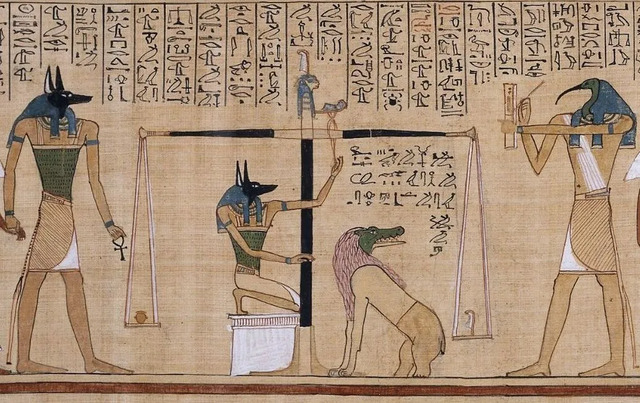
Central to Ancient Egyptian funerary beliefs was the Weighing of the Heart ceremony. This critical judgment ritual took place in the Hall of Ma’at, overseen by Osiris, the god of the afterlife. The deceased’s heart was placed on a scale and weighed against the feather of Ma’at, the goddess of truth and cosmic order.
If the heart was lighter than or equal to the feather, it signified a virtuous life lived in accordance with Ma’at’s principles. The soul was granted entry into the Field of Reeds, a paradisiacal afterlife. However, if the heart was heavier, burdened by sins and transgressions, it faced a grim fate: it would be devoured by Ammit, a fearsome creature with the head of a crocodile, the body of a lion, and the hindquarters of a hippopotamus. This obliteration meant the soul ceased to exist, a fate far worse than death.
Video
Watch the shocking appraisal of an ancient Egyptian scarab ring on Pawn Stars – see how this fascinating artifact is valued in Season 14!
Ma’at: The Guiding Principle of Life
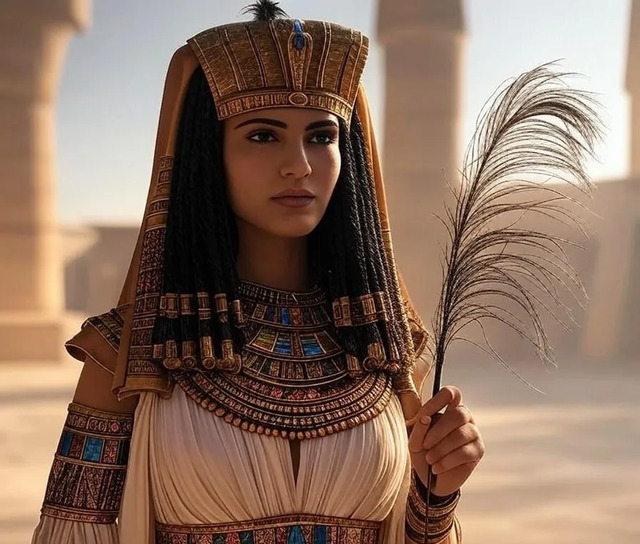
Ma’at embodied truth, justice, and balance, values that were central to both the individual and society. Depicted as a woman with an ostrich feather atop her head, Ma’at’s presence was felt in every aspect of Egyptian life. Her feather, used in the judgment ritual, symbolized the ideal harmony and righteousness that every Egyptian aspired to uphold.
The principles of Ma’at extended beyond spiritual beliefs, influencing societal norms and governance. Living in accordance with Ma’at meant contributing to cosmic and social balance, ensuring order in both life and death.
Variations and Evolution of Heart Amulets
Heart amulets evolved over time, reflecting shifts in material availability and cultural practices. During the New Kingdom and Ramesside Period (c. 1295–1070 B.C.), red jasper became a popular material due to its vibrant color and symbolic connection to life and protection. Faience and carnelian amulets were also common, each carrying unique spiritual connotations.
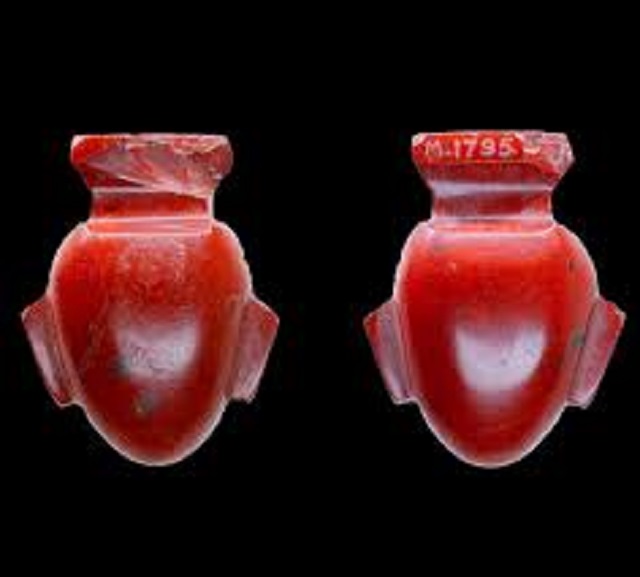
The inscriptions on these amulets often grew more elaborate, incorporating additional spells and protective texts. The practice of using heart scarabs with inscribed spells continued well into the Third Intermediate Period, underscoring their enduring significance in Egyptian burial rites.
The Legacy of Heart Amulets
The heart amulet’s symbolism extended far beyond its physical form. It encapsulated the Egyptian belief in personal accountability, the importance of moral integrity, and the hope for eternal life. Depictions of the Weighing of the Heart ritual in tomb paintings, papyri, and funerary texts served as reminders of these values, shaping not only religious practices but also societal norms.
Even in modern times, the heart remains a universal symbol of love, emotion, and truth, echoing its ancient roots. The legacy of these amulets continues to inspire awe and fascination, bridging the gap between past and present.
Conclusion
Heart amulets were not just protective artifacts; they were profound expressions of Ancient Egyptian spirituality, morality, and hope for the afterlife. Through their craftsmanship, inscriptions, and placement, these amulets safeguarded the very essence of the individual, ensuring their heart remained true in the ultimate judgment. As enduring symbols of balance and justice, they remind us of the timeless quest for harmony in life and beyond.
